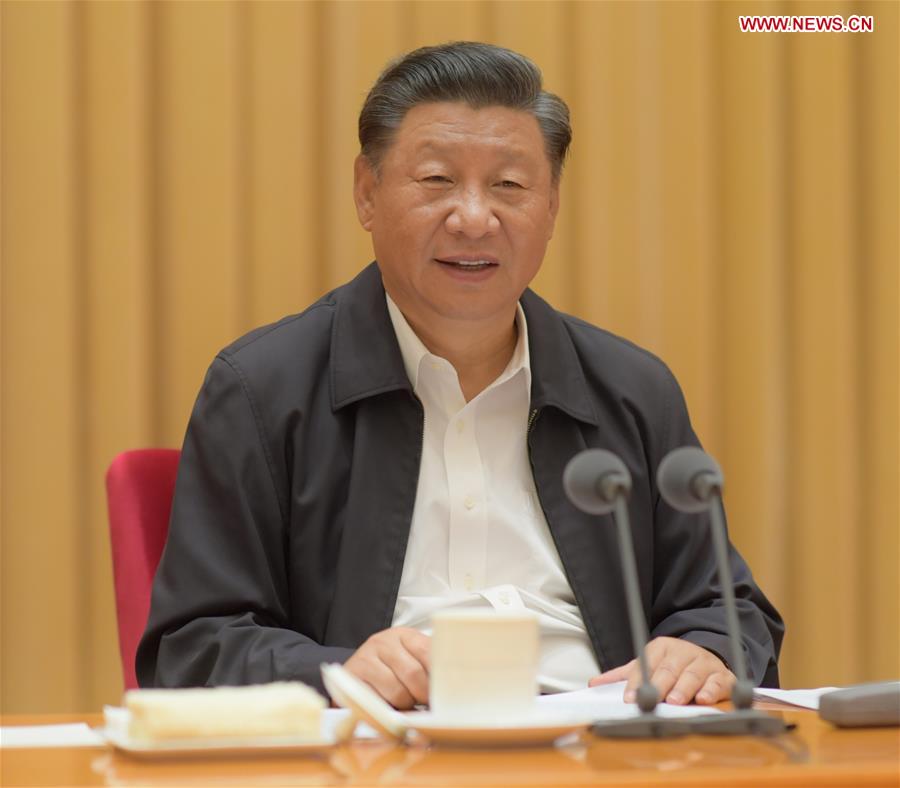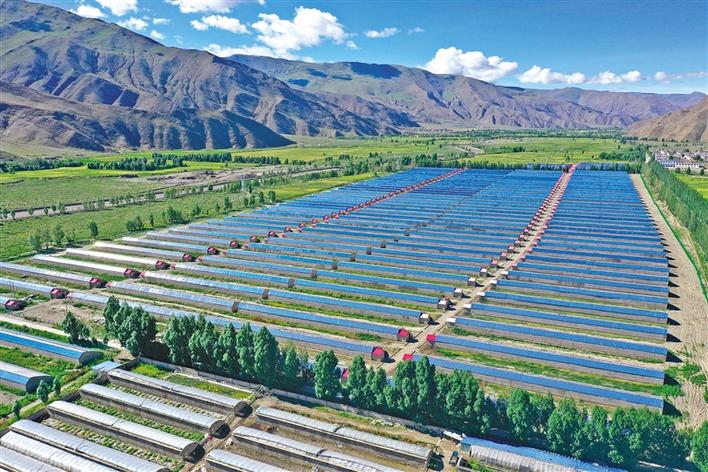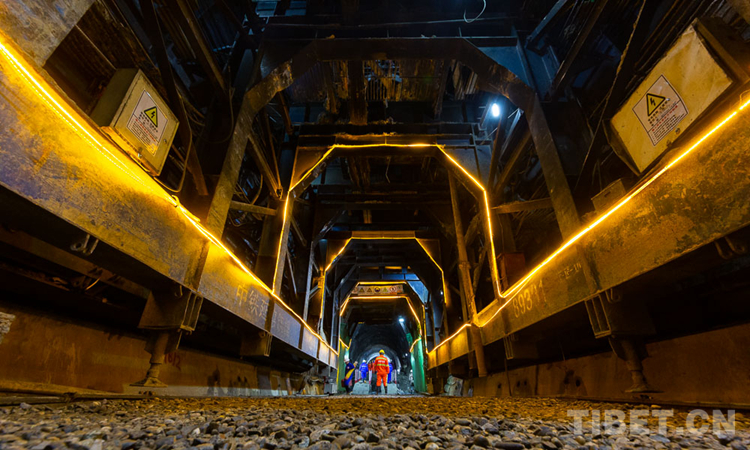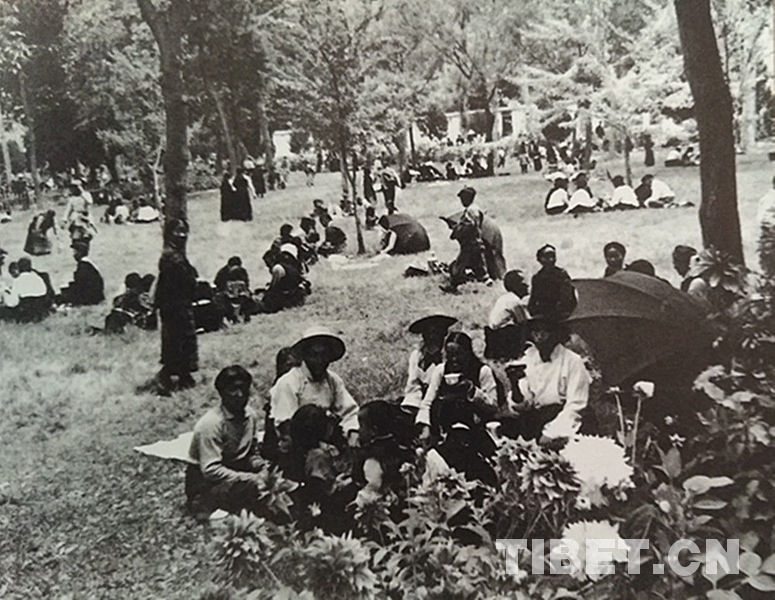China endeavors to open up new vistas for aiding Tibet
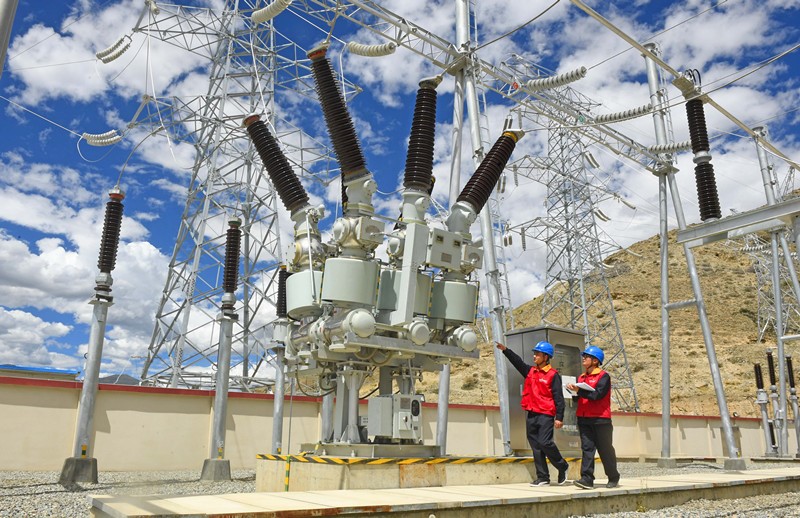
Staff workers with the State Grid Anhui Electric Power Co., Ltd. conduct inspection on power supply equipment in Zhanang county, Shannan, southwest China’s Tibet autonomous region, in preparation for the peak demand for electricity in summer, June 17. Zhanang county is located at an altitude of over 3,540 meters. (Photo by Song Weixing/People’s Daily Online)
Many roads in southwest China’s Tibet autonomous region are named after provinces or municipalities in the country that have assisted the region, such as the Beijing Road in Lhasa, capital of Tibet, Hunan Road in Shannan, and Shandong Road in Shigatse.
There’s an elevation difference of more than 3,600 meters between Beijing and Lhasa, which stand over 3,500 kilometers apart, yet such distance has never blocked the close friendship between the two cities.
Since it started to provide partner assistance for two districts and two counties in Lhasa, namely Chengguan district, Doilungdeqen district, Damxung county and Nyemo County, in 1995, Beijing has invested massive manpower and resources in the city, building for which 554 relevant projects covering such facilities as modern ranch, the city’s first Class A of Grade 3 hospital, Tibetan-style family inns and vegetable greenhouses.
At the end of September 2018, Lhasa became one of the first batch of prefecture-level cities in the country’s“three regions and three prefectures” suffering extreme poverty that had been entirely lifted out of poverty.
Such a historic achievement resulted from the hard work and dedication of more than 900 Communist Party of China (CPC) cadres from Beijing who have assisted Tibet.
In addition to the tough tasks, these cadres have to overcome all kinds of difficulties. Their families have also given resolute support for their work and made sacrifices silently.
It is the original aspiration and mission of seeking happiness for the people as well as the noble responsibility for administering, stabilizing and rejuvenating Tibet that have prompted them to devote themselves where they are mostly needed by the Tibetan people.
The establishment of and improvement in the partner assistance mechanism for Tibet is not only an institutional institution made by the central government of China to support Tibet’s economic and social development under the socialist system, but also a vivid manifestation of the mutual assistance and brotherhood among the ethnic groups of the Chinese nation.
Working on the plateau, the scarcest thing is oxygen and the most precious is spirit, said Xi Jinping, president of China and general secretary of the CPC Central Committee.
All CPC cadres that have assisted Tibet have regarded aiding Tibet as an important political task and duty incumbent on them and considered it their mission to build, develop, stabilize and benefit the region.
To fulfill their mission, batches of CPC cadres have sacrificed what they should have had and enjoyed, taken root on the plateau, and dedicated themselves to hard work, continuously injecting new dynamism into the “old Tibetan spirit” of being tough, brave, indefatigable, united, and devoted.
Aiding Tibet in the new era is about providing all-round assistance for Tibet and helping the region to thrive on its own.
Today, the ninth batch of CPC cadres dispatched from Beijing to Tibet have worked in the region for more than a year. Attaching great importance to Party building, they have established 12 temporary Party branches in the region.
To stimulate the endogenous power of Lhasa for economic and social development, CPC cadres from Beijing have made arduous efforts.
Based on a systematic review of more than 20 years of experience in aiding Tibet, they focused efforts on identifying the region’s weak links in development, and proposed five major projects involving such ideas as development of endogenous power, targeted assistance, partner assistance, and revitalization of Tibet.
By concentrating on accomplishing major tasks in Lhasa, Beijing has aimed to provide high-quality assistance to Lhasa in a bid to consolidate the results of poverty alleviation and promote rural revitalization.
“Being lifted out of poverty is not an end in itself but the starting point of a new life and a new pursuit,” Xi said.
As long as the impoverished areas have greater capabilities for development on their own, they are able to secure a better life for people.
While the lofty Qinghai-Tibet Plateau adds incomparable natural charm to Tibet, the solidarity and concerted efforts of the whole nation to aid the region give the world a glimpse of its humanistic beauty.
Ensuring that Tibet enjoys support from the central authorities and assistance from the whole country has been a consistent policy of the CPC Central Committee, according to Xi, who recently stressed at the seventh Central Symposium on Tibet Work held in Beijing a long-term commitment to the policy, and called on CPC cadres to sum up former experience and open up new vistas for aiding Tibet.
Standing at a new historical starting point, the over 3 million Tibetan people and CPC cadres that have come to assist the region are bound to build a new Tibet that enjoys unity of various ethnic groups, rapid development, and prosperity through concerted efforts and hard work.
Tibet Stories

Livestreamer showcases beauty of Tibet
Unlike her peers in the city who use trendy cafes, restaurants and shopping malls for their ...

